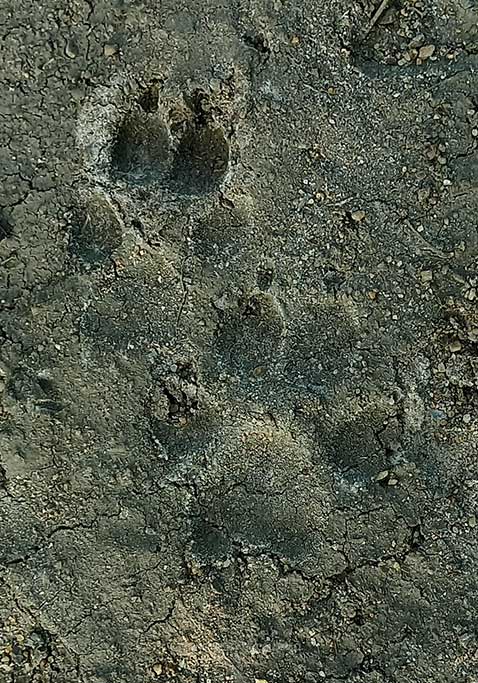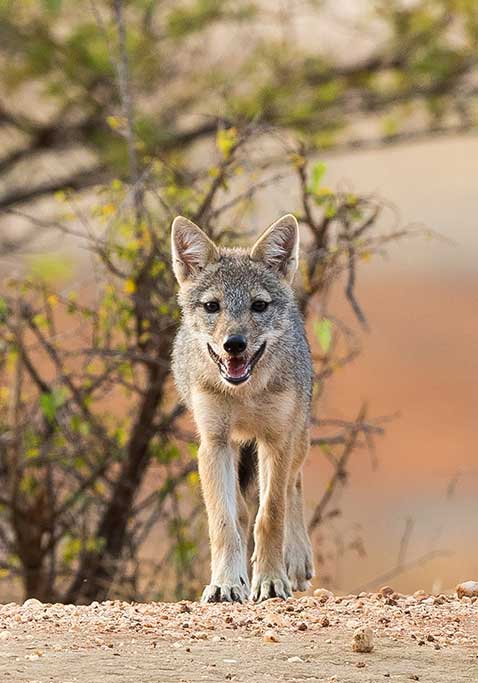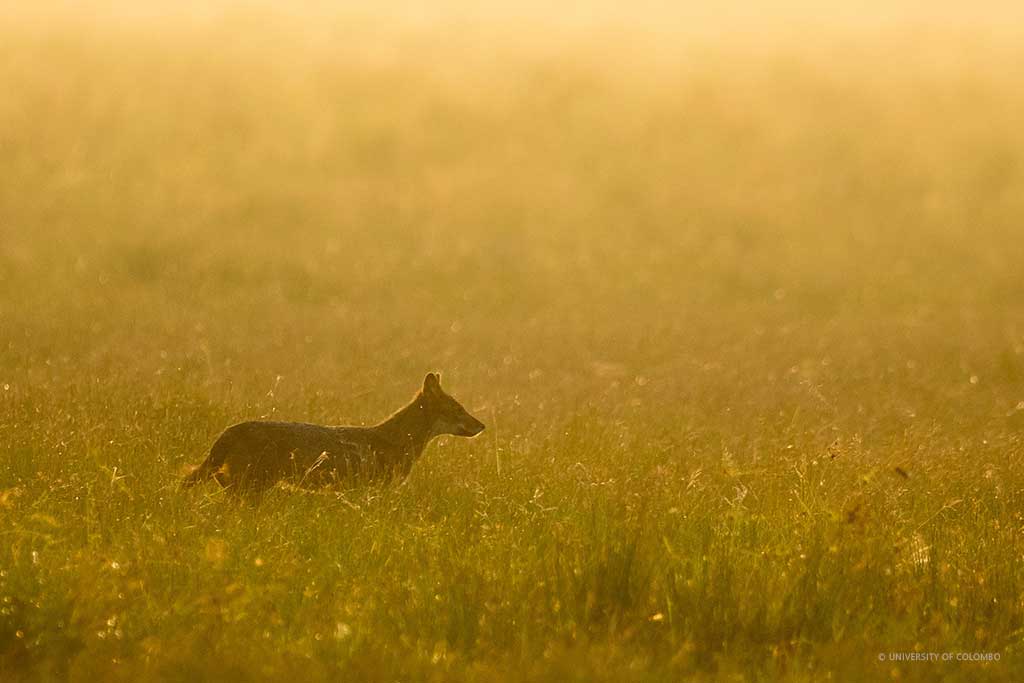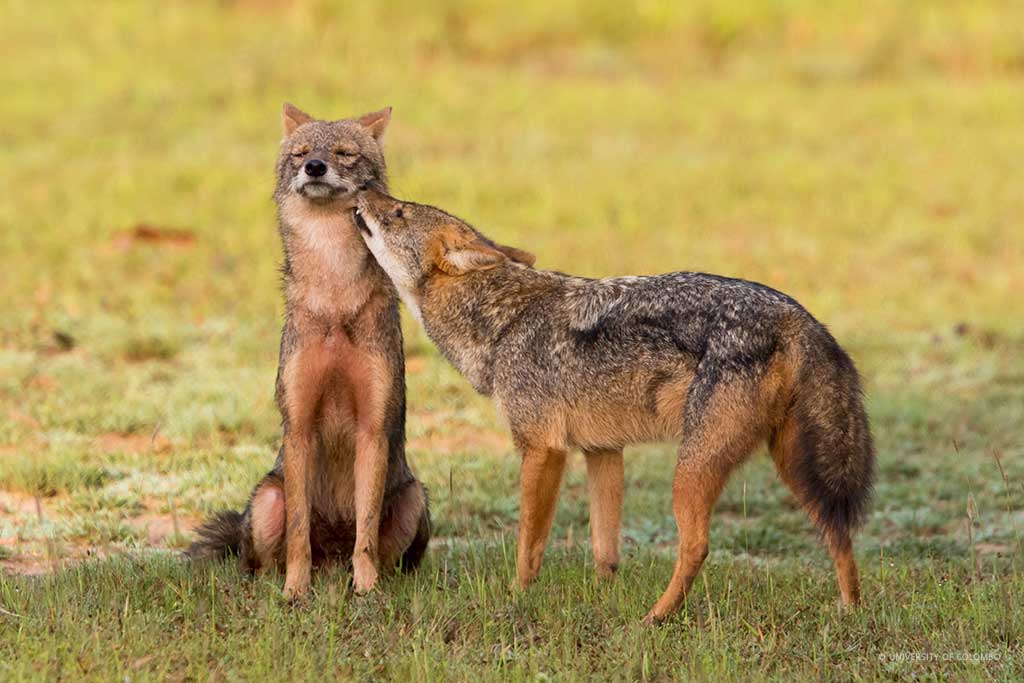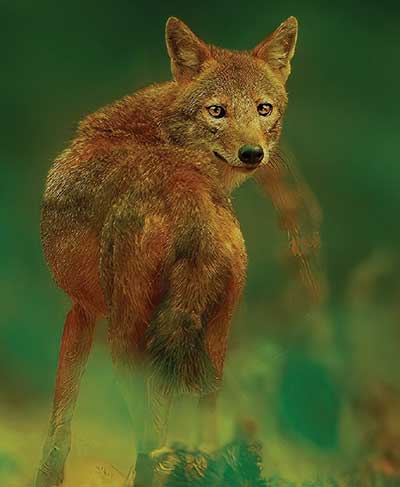
The Way of the Jackal: The Untold Story of Sri Lanka’s Wild Dog
The economic net worth of a close relative of our Jackal, the Grey Wolf in North America has been estimated to be about $171,000 per individual wolf. What is the equivalent of our very own ‘wolf’ – the Sri Lankan Jackal? Sadly, we don’t have a reliable figure for that.
A group of researchers from the Laboratory for Molecular Ecology & Evolution at the Department of Zoology & Environment Sciences of the Faculty of Science has conducted an extensive study on this largely forgotten natural asset of Sri Lanka in the light of its biological position, ecological significance to the country’s biodiversity and agriculture, and its economic potential as a high-values species in the Sri Lankan tourism industry.
The result is a stunning monograph published by three authors, Ms Uthpalawarna Jayaweera, Professor Sampath Seneviratne and Mr Chandika Jayaratne. Uthapalwarna is a Zoology graduate and Chandika is pursuing a postgraduate degree under Professor Seneviratne.
They found that the Sri Lankan jackal is the only island subspecies of the Eurasian Golden Jackal. Historically, it was even considered a species endemic to Sri Lanka known as Canis lankae. It is the sole wild dog on the island and stands as the third-largest carnivore present; only second to the charismatic Leopard and the sluggish Sloth Bear.
Jackal controls the Peafowl population. The disappearance of jackals is now taking a hit on our agriculture as the peafowls are ravaging the island and have become the number one agricultural pest. The toll jackals take on rodent pests in paddy fields and chena cultivations point to another significant contribution. Wild Boar population dynamics might also be impacted by the presence of jackals, another potentially positive agricultural effect. How much is all this worth for the farmer for his livelihood, and the country for its Agri-economy – in rupees?
The Sri Lankan Jackal is not an animal that is currently sought after by those who go to our national parks to see wildlife. The headlines have long been captured by the likes of the Sri Lankan Leopard, the Asiatic Elephant, and the Sloth Bear. The tourism dollar value of a species is often based on its charisma. The topmost charismatic species globally include the tiger in the top seat, followed by the Lion, Elephant, Giraffe, Leopard, Panda, Cheetah, Polar Bear, Grey Wolf and Gorilla.
Sri Lanka is listed as the best big game wildlife destination outside of Africa, the best place to see the Leopard and the Blue Whale. Each leopard in Yala National Park is valued at about 43 million Sri Lankan rupees just based on its direct contribution to ecotourism. Jackal too has all the elements to be a highly charismatic and high-value species for our tourism industry – we must start the campaign – for our economy, and our wildlife.
Written in plain language with 152 pages and over 100 colour photographs, The Way of the Jackal is a comprehensive review of the species, focusing on wildlife enthusiasts, biologists and students alike. It provides a detailed description of its physical characteristics, behaviour, social life, and vocalization. It also provides field techniques to study carnivores, methods to mitigate conflict, and the potential of jackals as a high-value species for our economy.

